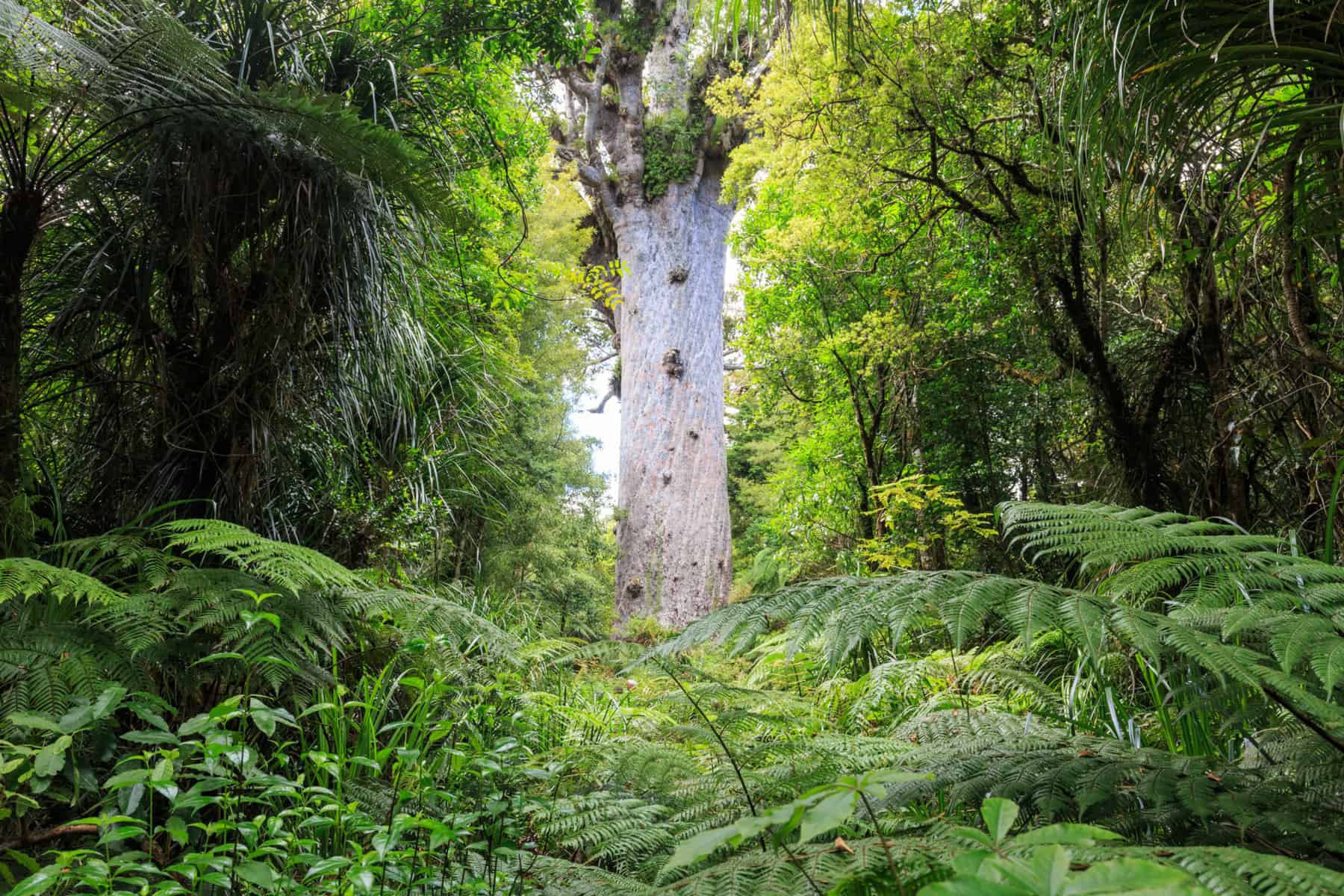
Being among the most ancient forests in the world, kauri (Agathis australis) forests are culturally and historically significant in Aotearoa New Zealand. Originally covering over 1 million hectares on Aotearoa’s upper North Island, forest clearance has reduced this to only 7,500 hectares. Kauri are now faced with the threat of kauri dieback, a disease caused by a soil-borne pathogen (Phytophthora agathidicida) which is fatal. As such, research is needed to understand the impacts of this disease.
This research found that asymptomatic kauri soils had higher levels of microbes which have been studied previously for their role in biocontrol.
“The findings of this research are promising and give us an indication of what microbes we can look towards to start conducting further research” Alexa says.
“However, our study was a field based, observational study so we do need to conduct more targeted research before we can assess if these microorganisms can be used to fight kauri dieback.”
Symptomatic soils were found to have increased fungal diversity, which is thought to be a result of disease expression by infected kauri and the higher availability of dead plant tissue, rather than a factor which contributes to the effects of the disease.
It was also found that symptomatic soils had a greater number of carbon degradation genes. “This finding was based off of the results of gene microarray analysis performed on genomic DNA – no direct enzyme assays were performed on symptomatic soils. Such research needs to be performed for us to be able accurately determine the potential implications of kauri dieback on soil carbon degradation.”
The differences found in both the fungal diversity and amount of carbon degradation genes in symptomatic soils, compared to those in asymptomatic soils, could have potential implications for the long term carbon cycling of kauri forests that are infected.
“This is something important to consider when thinking about how we are going to manage the more widespread impacts of dieback on kauri forests for the future.”
For Alexa, the main challenge of this research was doing the soil baiting bioassays to test for the presence of P. agathidicida in the soil samples – a procedure which is very repetitive and time consuming. The most rewarding aspect was when it came time to perform the data analysis, and she got to see the results of her mahi (work) in the field and laboratory.
Looking forward, the next step for research in this area is moving from observational studies in the field to more controlled experiments. “This study aimed to begin the process of understanding how the soil microbiota responds to kauri dieback disease expression. This acted as a very important starting point, however we need more data to come to any accurate conclusions regarding how the soil microbiota may mediate disease suppression.”
You can read the full paper here.
Published October 2020.